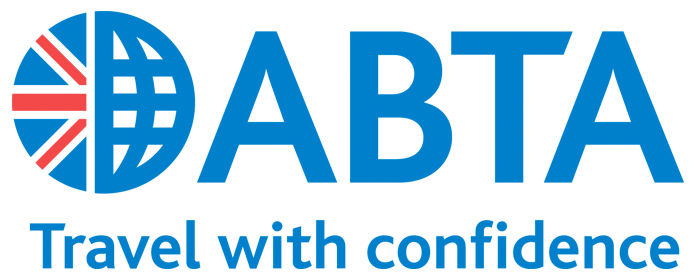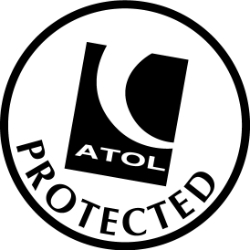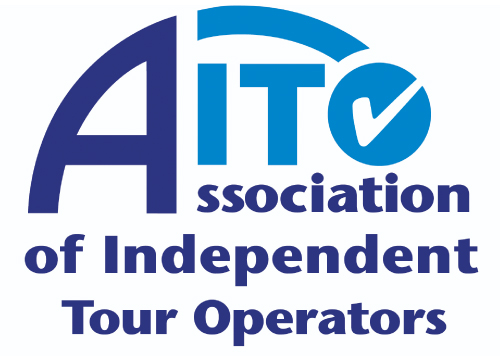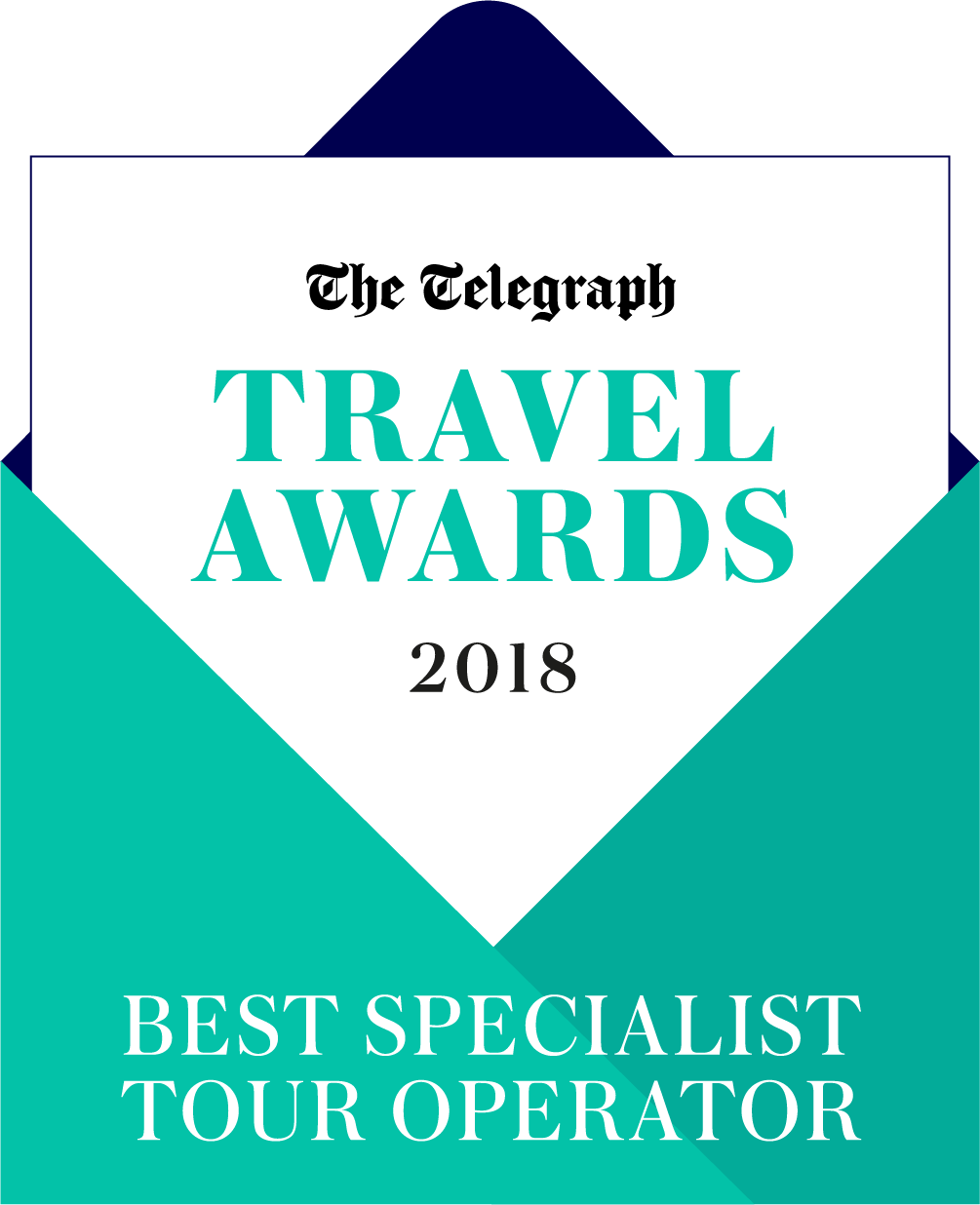The word Borneo calls to mind images of exotic rainforests with wild orangutans hiding in the trees, tattooed headhunters living in jungle longhouses, and a land filled with fascinating places to explore. Although headhunting is a thing of the past, the rest is fairly accurate. This is a land filled with incredible wildlife and distinctive cultures, native peoples who maintain their customs in an ever-modernizing world, and some truly amazing natural beauty. It’s home to a diverse population that embraces their differences and welcomes visitors with friendly smiles and polite curiosity. We pride ourselves on arranging custom made trips at the same price as booking directly and encourage you to take advantage of our experience and knowledge. To get you started, here are answers to the most frequently asked questions we receive and some of our secret tips for the perfect Borneo holiday.
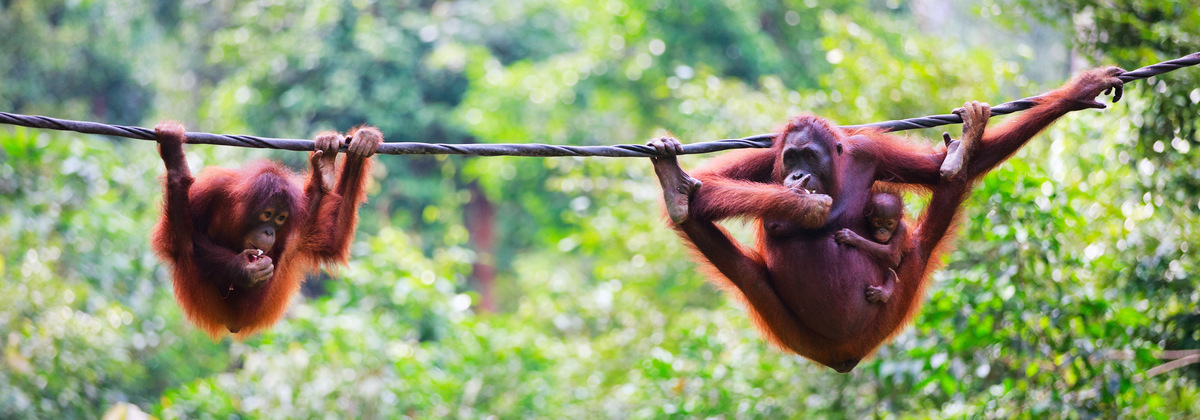
Borneo is more than jungle
Spending time in the jungles and rainforests of Borneo is well worth the trip but there’s so much more to see. If you’re flying all the way there, build in time to see the caves of Mulu or walk the trails at the base of Mount Kinabalu, visit a longhouse, snorkel or dive in the marine park around Gaya Island or spread out in a nearly private beach at the Tip of Borneo. If you’re a diver, experience the macro life of Mabul and diverse pelagic life at Sipadan.
Kuching rather than Kota Kinabalu for city time
Kota Kinabalu is the gateway to the wonderland of Sabah with its rich wildlife and gorgeous scenery. The hotels are mostly high-rise affairs, international chains, and budget stalwarts with lackluster service. There’s a night market and plenty of shopping malls but for a better city experience in Borneo, Kuching is the place to be. Located on the Sarawak River and influenced by its Malay, Indian, Chinese, and British history, the small city is pleasant to walk around and there’s loads to do. Kuching is a good base from which to see wildlife, visit longhouses, and try the scrumptious local cuisine. We’re also a fan of a boutique hotel here – one of the few in Borneo.
Embrace the communal spirit
Particularly in Sabah, shared transportation, group seating at mealtimes, shared wildlife viewing, and group tours are typical. High quality guides are limited in number, the environment is fragile, and you’re less likely to disturb wildlife if only one boat or vehicle is pulling up to watch monkeys instead of three. Feeding times at the orangutan centre in Sepilok and Semmenggoh Nature Reserve are the same every day so even if you have a private guide at your side, you’ll be surrounded by dozens (or hundreds) of other people. In truth, there isn’t much to be gained by having a private guide in these areas. Communal culture is a way of life in Borneo so try to embrace the spirit and share your dinner table with your fellow holiday-makers. Feel good about doing less harm to the earth by sharing the ride between lodges and sights. When having a private experience is worth it, we’ll let you know and make the arrangements.
After jungle lodges, a bit of luxury is worth it
The standard of accommodation in Borneo is quite varied and there’s little in the mid-range. Lodges in the rainforest and jungles tend to be comfortable yet fairly simple. The remote locations and delicate environment make true luxury a rare – and costly – treat. If you fancy a fabulous rainforest experience, Borneo Rainforest Lodge in Danum Valley is an amazing splurge. Otherwise, we recommend embracing the rustic charm of the various jungle lodges throughout your trip and then splashing out on one of the plush resorts on Gaya Island.
Trying to see it all is probably too much
If you have a month, a healthy budget, and you aren’t interested in resting on your holiday, then you can see all the highlights and a few of the harder-to-reach places. It won’t be relaxing and your chances of seeing wildlife will be lower than you think. Focus on a few places. Staying an extra day along the Kinabatangan River or at Tabin can mean the difference between seeing a wild orangutan, Borneo pygmy elephants, or whatever animal you’re hoping to see. If you tell us what you’re interested in, we’ll suggest a route that maximizes your time while giving you a rest.
Brunei isn’t as easy to reach as you might expect
Sandwiched between the Malaysian states of Sabah and Sarawak, the small nation of Brunei seems easy to access. In reality, there are limited flights, often at inconvenient times. Traveling overland from Sabah or Sarawak can take the better part of a day, especially if there are delays at the borders. If visiting is important to you, consider starting or ending your trip in this peaceful country.
Flying is usually better than driving
Internal flights are inexpensive and short. Traveling overland will take you through palm oil plantations and the ride will almost certainly be longer than you expect for the distance covered. Where flying is not an option, we encourage shared transfers with guests who are traveling to and from the same lodges. The less traffic on the road, the faster you’ll reach your destination.
Guides are an invaluable resource
Many of the guides we work with speak three or more languages. In rural areas or when visiting tribes such as the Iban and Bidayuh, don’t be shy about asking their help with communicating. Better yet, ask them to teach you a few words and phrases, they’ll be happy to help. In addition to their cultural knowledge, guides can spot animals that might seem like nothing but a pile of leaves on first glance. Many of our guides have spent time living deep in the jungle or with tribes maintaining a traditional way of life. Ask about their background and you may get to hear some remarkable stories.
Borneo for families
With so much to discover, safe transportation, family friendly places to stay, and an English-speaking population, Borneo is a memorable destination for families with children of all ages. For those with young ones, we recommend staying in Kuching and exploring on day trips. Once you’ve had your fill of wildlife and culture, fly to one of the lovely beaches elsewhere in Borneo or Malaysia. Older children and teenagers are often the best wildlife spotters in a group and delight in the canopy walkways you’ll encounter in the region. Holidays in Borneo are generally quite active and with limited phone and wifi coverage in many places, you may find your family is talking more than ever.
Our favourite trip…
Borneo has so much to offer that it’s hard to play favourites. If you have between two and three weeks, we love combining our Kuching and Kampongs itinerary with the Highlights of Sabah. This is a great mix of city, culture, history, wildlife, jungle, beach time, and places to stay ranging from a traditional longhouse to a luxurious villa. No two trips we create are identical as we tailor everything to suit you so please get in touch.
When to go:
Borneo is a year-round destination with tropical heat and a chance of rain nearly every day.
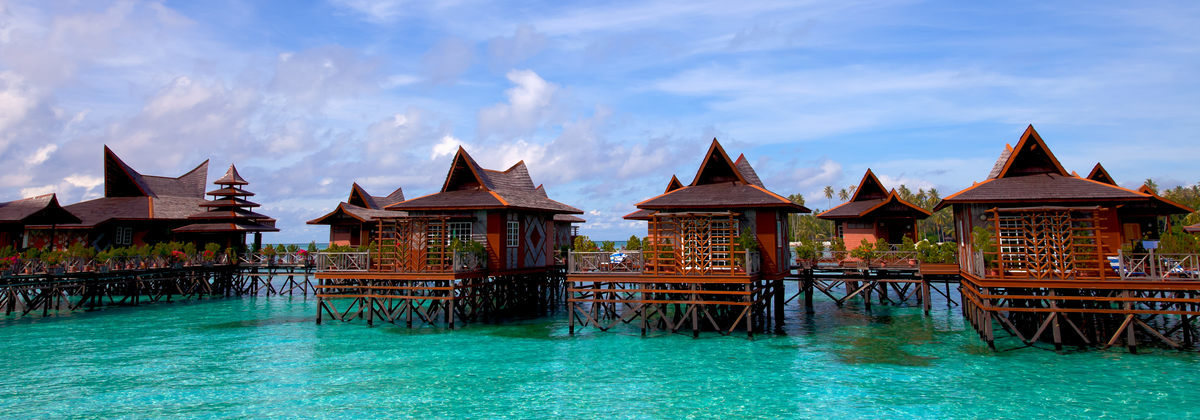
The best times to visit Borneo
July and August are peak months for travel in Borneo which means higher prices and bigger crowds. Historically, these were the driest times and some years, that’s still true. We think March – June and September – October are the best months to visit Borneo. Crowds are smaller and there’s less chance of the heavy rains. Much of the island is covered in tropical rainforest so rain can fall any day of the year but often it’s only a brief shower. We recommend always carrying a poncho or umbrella in Borneo, no matter what time of year it is!
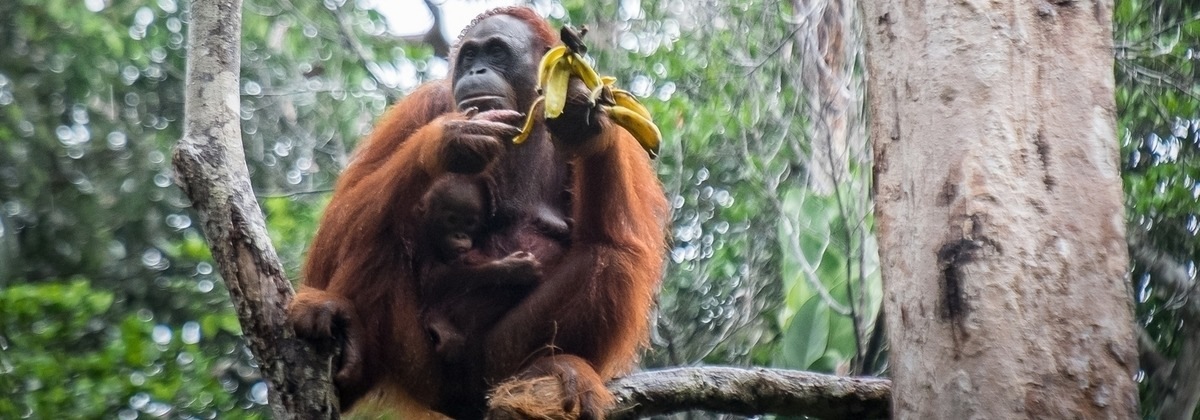
Semi-wild orangutans
If you’re hoping to see orangutans at Sepilok Orang Utan Rehabilitation Centre or Semenggoh Nature Reserve, it’s best to come when the trees are not fruiting. If there’s enough fruit in the forest, the apes won’t come in for feedings. March through September are the best bets at Semenggoh and at Sepilok, March through July or early August. Regardless when you visit, there’s never a guarantee you’ll see orangutans and if you don’t, try to take comfort in the fact they’re rehabilitated enough to survive in the wild.
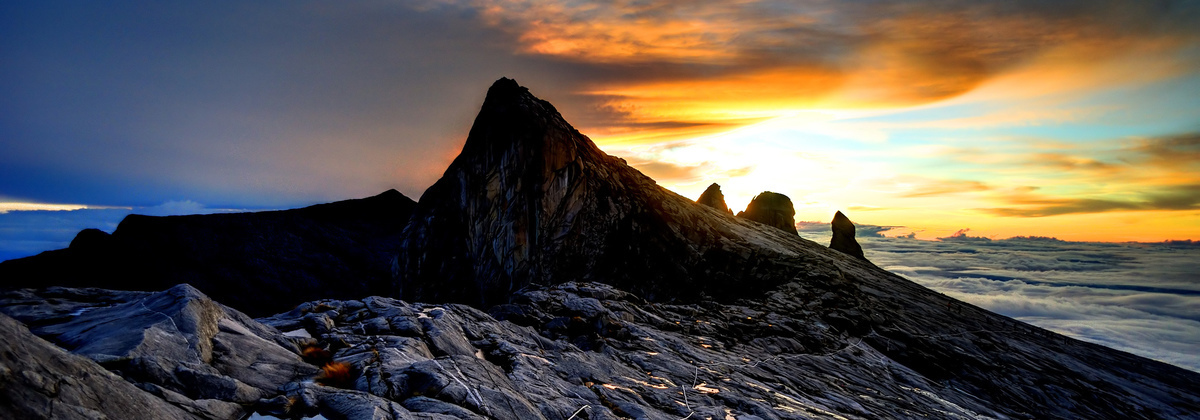
Sunrise on Mount Kinabalu
March and April are usually the best months for a clear sunrise atop Mount Kinabalu although this may be shifting toward April and May. At any time of the year, climbers can have two sunny days or a soggy slog to the summit. The climb is rewarding year-round and the mountain’s cooler temperatures are a nice respite from the jungle heat. Conditions are carefully monitored and if it’s deemed too dangerous, part of the trail will be closed.
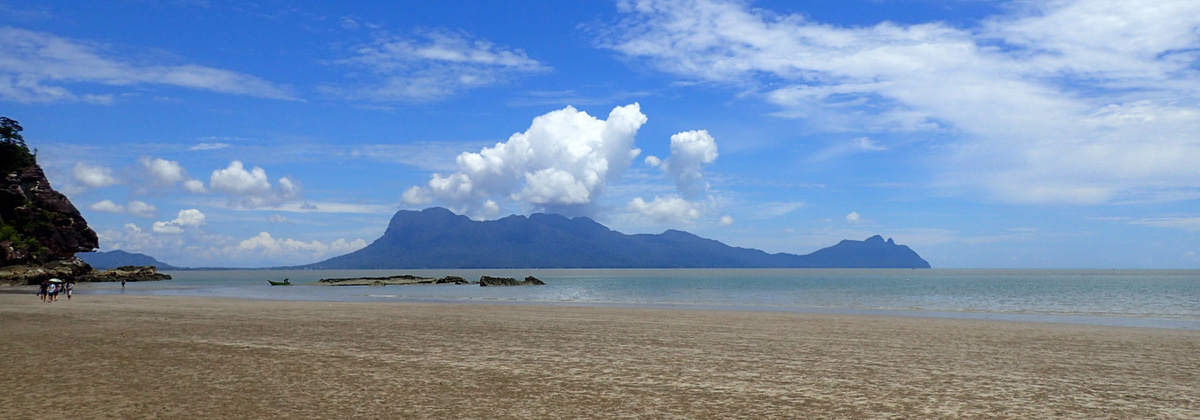
Western Sarawak has its own weather
The area around Kuching is subject to storms that pass through the Gulf of Thailand along the east coast of Thailand and Malaysia. By the time these reach Sarawak, they’ve usually petered out but sea conditions can be rough and rainfall heavier than the rest of the year. If visiting Bako National Park is a priority, we suggest avoiding November through February as the crossing could be too windy for boats to run.
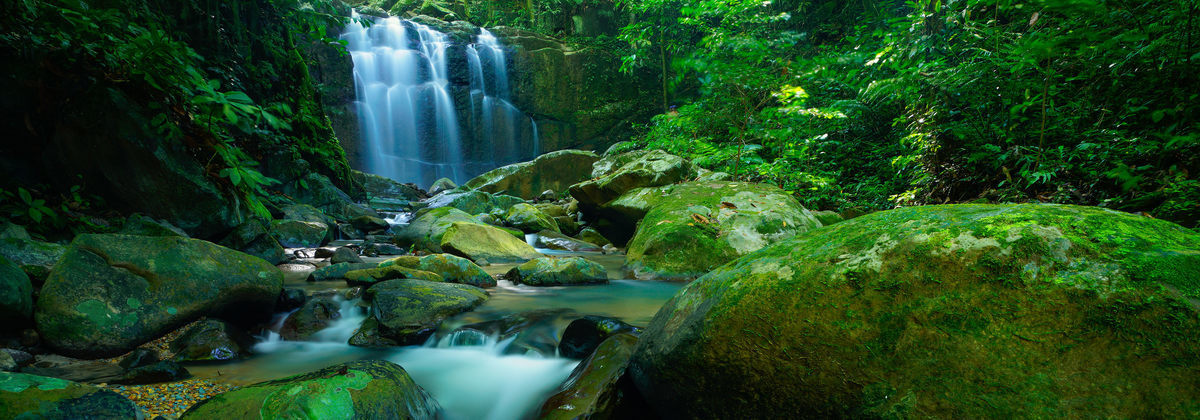
Danum Valley
The untouched primary rainforest of Danum Valley feels like an ancient wonderland. Lodging is very limited within the valley and high season here runs March through October. Sometimes there’s a benefit to going in May when prices may come down for a few weeks. When it comes to weather, it’s important to remember that rainforests are so named for a reason. It rains often and it rains hard. That doesn’t mean the sun never shines but don’t be surprised if your walking and safari schedule is rearranged each day due to the weather.
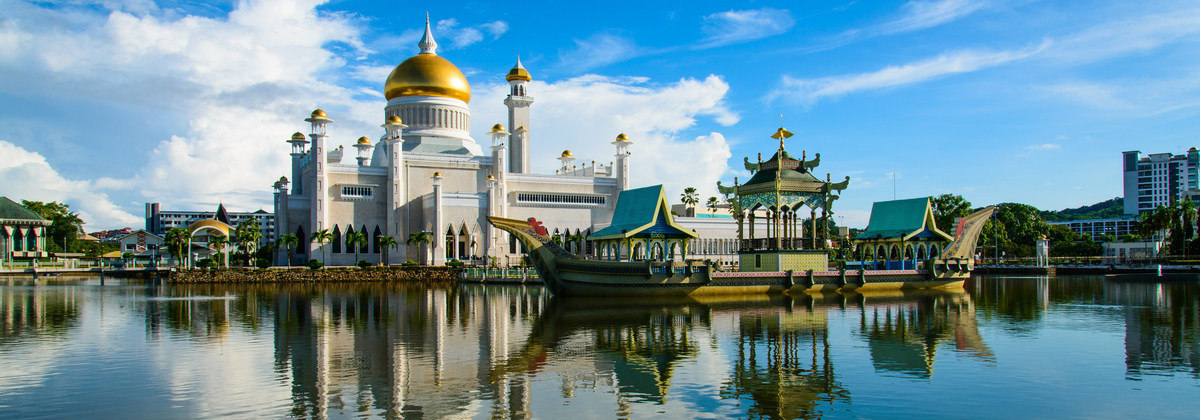
Ramadan
Most Malaysians are Muslim although in Borneo, you’ll find Chinese, Indian, and local tribes that practice other religions so for the most part, it’s business as usual during Ramadan. It’s an interesting time of year to visit, particularly in the cities and towns where nightly markets come alive to break the fast. Hundreds of stalls pop up in Kuching every evening during this time and throughout the region, you can find great food once the sun sets. In Brunei, life moves at a much slower pace during this time and many businesses close early.
Where to go:
Depending on your requirements and preferences, we have a selection of Borneo itineraries on our website for inspiration. We’ve also compiled some hints & tips below:
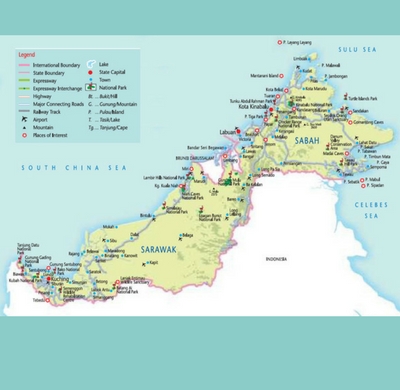
For wildlife viewing, focus on Sabah. Devote time in Sukau and Tabin to looking for orangutans, monkeys, hornbills, pygmy elephants, gibbons, colugos, langurs, and more. Add a day in Sukau for an elephant “hunt” or a trip to Gomantong Cave. In Tabin, book a few extra walks for bird watching.
If legends of headhunters and tribal culture tickle your fancy, we suggest the lake region of Batang Ai where the Iban maintain their longhouse living arrangements. If you have limited time, meet the Bidayuh near the Indonesian border. To really see what life is like, stay the night.
Kuching is an ideal base for families who want a taste of Borneo with minimal travel. Use the city as a base to explore wildlife, caves, longhouses, jungle, and the multicultural streets of town.
Luxuriating by the beach on Gaya Island is an easy end to a Borneo holiday but for an exclusive escape by the beach, head for the Tip of Borneo. The water is clear, the sand is fine, and you can have a sumptuous villa all to yourselves.
Things to bring you may not have considered:
- Shoes that slip off easily. It’s customary in Borneo to remove one’s shoes upon entering a home, mosque, temple, and in some cases the public areas of a resort or lodge.
- Sun cream, sunglasses, and a hat. Sitting just north of the equator, Borneo gets hit with strong sun any time of the year.
- A poncho or rain jacket and an umbrella. Bring at least one of these with you every day as rain can strike at any moment no matter where you are.
- Waterproof bag large enough to hold your camera and valuables.
- Mosquito repellant and anti-itch cream. Dusk and dawn are the best hours of the day to look for wildlife but they’re also when mosquitoes are most active.
- Modest clothing as Borneo is a predominantly Muslim region so we advise you to respect traditions and social customs. This is more a matter of being respectful than it is about rules although in Brunei, it’s even more important.
- Reusable water bottle as many lodges and resorts provide pitchers and jugs of safe drinking water so that you may refill your bottle instead of supplying single-use plastic.
- Binoculars for wildlife spotting and a good torch for night walks and drives.
- An extra pair of socks that you don’t mind getting muddy.
- Sturdy walking shoes, ideally waterproof. Some trails have boardwalks, others are dirt or gravel and all can be slippery.
Extra tips from us:
- Outside of airports and city centres, exchanging money and finding a reliable ATM is difficult. We recommend getting Malaysian Ringitt at the airport when you arrive, from an ATM within a bank if you’re starting your holiday in a city, or by exchanging money at your hotel.
- Credit cards can be used at most hotels and bigger restaurants.
- Tipping in restaurants is not expected as a service charge is often included in your bill.
- When exchanging money, it’s wise to get a few smaller notes and some coins for buying fruit and snacks during market visits and to tip drivers and others.
- If you eat at a local market or other street food venue – and we recommend that you do – look for a vendor who will cook your food after you’ve ordered. Street food in Borneo is usually quite safe but it’s always sensible to be wary of food that’s been sitting out for some time.
- Should the opportunity arise, we suggest that you try tuak, the local rice wine. Each one is different and it’s generally quite good.
- To avoid an upset stomach, don’t drink the tap water and be careful of salads or other raw vegetables that may have been washed in tap water.
- Carry a few coins and a bit of tissue or toilet roll with you. There is often a small fee to use public washrooms and an extra charge for tissue. If toilet roll is provided, it’s likely to be in one dispenser near the sinks or washroom door so look for it on your way in.
- Leeches are a nuisance, nothing more. Buy a pair of leech socks when you arrive and when you find one trying to crawl down your trousers and into your shoes, ask your guide to show you how to pick it off.
- Don’t expect fast WiFi or a good phone signal outside of Kota Kinabalu, Kuching, and Bandar Seri Begawan. WiFi in hotel and lodge restaurants or lobbies is usually sufficient to check email and messages but uploading photos had better wait until you get home. If you do want to stay connected and your phone is unlocked, buy a local SIM card when you arrive with a small data plan. You’ll get a phone signal on Mount Kinabalu but not in the middle of the rainforest!
- Pack lightly. There’s a 20kg limit on checked luggage for many flights within Borneo. Bring a small overnight bag that can hold your personal items and valuables. You may head to your lodge or resort on one boat while your suitcase rides in another. Also handy for leaving behind your big bag when you head to Bako or Batang Ai for a night.
A few phrases go a long way:
Malay is the primary language in Borneo although nearly everyone also speaks English. You may hear Cantonese, Hokkein, Mandarin, and Tamil as well. In Brunei, you’ll see Arabic printed on signs but few people know the language and stick to Malay and English. When you visit rural or tribal areas, you will find that many people speak an indigenous language. Some of the words you’re most likely to use such as ‘thank you’ are often quite similar to Malay so it’s worth trying out your Bahasa Malayu.
Here are some key Malay phrases to help you get by in Borneo:
- Hello – Hello
- Terima kasih – thank you
- Apa khabar? – How are you?
- Khabar baik terima – I’m fine
- Ya – yes
- Tidak – no (also means not)
- Salamat pagi – Good morning
- Salamat tengahari – Good afternoon
- Salamat petang – Good evening
- Berapa? – How much?
- Salamat tinggal – Goodbye
- Tandas di mana? – Where is the toilet?
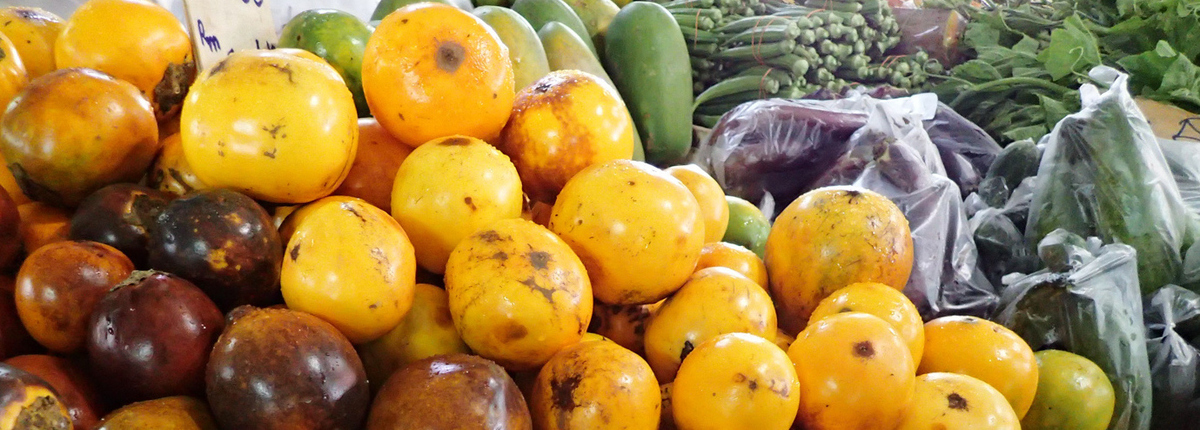
A taste of Borneo:
Food in Borneo is influenced by Malay, Indian, Chinese, and native tribes so there’s a wonderful mix of flavors on offer. While Malay food can be quite spicy, you’ll often have the option to add a bit of sambal to taste. This chili-based sauce comes in sweet, hot, and shrimp varieties. We encourage you to try it – although maybe with a bit of rice nearby!
As much as possible, we recommend that you try to eat where the locals do, as these coffee shops and little restaurants often serve the tastiest and most authentic cuisine. You can easily have a delicious and filling meal for less than 40 or 50 MYR. In some restaurants, portions are intended to be shared amongst a few people. If this is the case, you’ll see groups of families or friends around a table laden with platters of food. Follow their lead and order a few dishes to share.
For vegetarians visiting local coffee shops (kopi tiam) or market food stalls, a safe option is to ask for nasi goreng vegetarian for a plate of fried rice and vegetables. There’s often more to choose from and asking for makan vegetarian (vegetarian food) will open up a fun exchange intended to determine whether eggs and fish are acceptable.
In Sandakan, a number of open-air seafood restaurants along the waterfront serve some of the freshest fish in Borneo every evening. In Kuching, you’ll find pockets of Chinese food stalls throughout the city with tables, chairs, and a variety of dishes ranging from steamed buns to noodles, soups, and dim sum. Follow your nose and look for the busy restaurants and stalls.
When staying in jungle lodges, your selection will be limited by what the local chefs prepare. Fortunately the food is usually quite good and highlights fruit and vegetables in season with a variety of meat dishes prepared in traditional Sabahan and Sarawakian styles. A few options aimed for western palates may appear from time to time. Expect to see noodles (mee) or rice (nasi) at every meal and in the evening, a soup.
As Borneo is a predominantly Muslim island, you will find that some establishments don’t serve alcohol. If you want a glass of wine or an evening gin and tonic, you’re better to try more upmarket restaurants or eating at your hotel. At some of the open air seafood restaurants you can get a cold beer with your supper. Before you go we will give you a few suggestions of places to eat and drink.
Some of the most iconic sights in Borneo include:
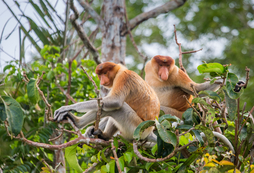 |
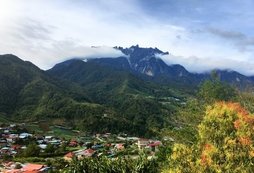 |
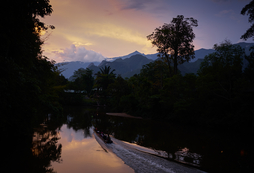 |
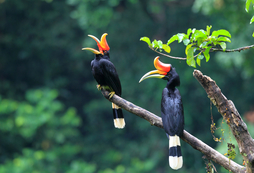 |
| Proboscis monkeys – Kinabatangan, Bako | Mount Kinabalu – Sabah | Batang Ai – Sarawak | Rhinoceros hornbills – rainforests and rivers |
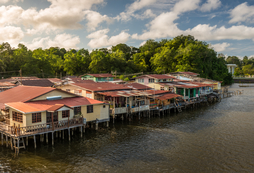 |
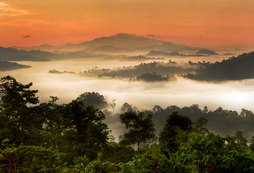 |
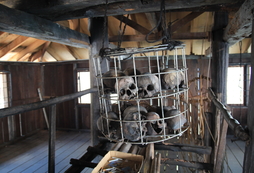 |
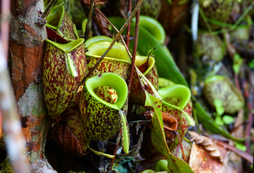 |
| Water villages – Brunei, Sandakan | Ancient rainforest – Danum Valley | Headhunter longhouses – Sarawak | Pitcher Plants – Bako, Kinabalu, and elsewhere |
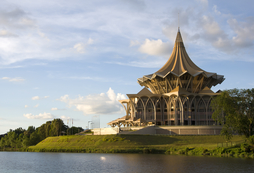 |
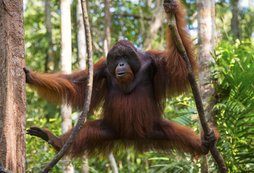 |
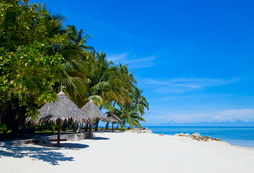 |
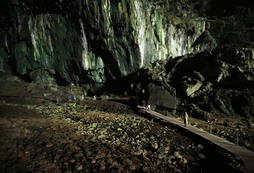 |
| Sarawak River – Kuching | Orangutan – “man of the forest” | Mabul – Celebes Sea | Caves of Mulu – Sarawak |
Things you should try in Borneo
Photography; Spotting flying squirrels; Snorkeling or diving; Drinking teh tarek; A night safari; Traipsing across a canopy walkway; Visiting a longhouse or farmstay; Watching orangutans at Sepilok or Semenggoh; Mimicking the sound of a proboscis monkey
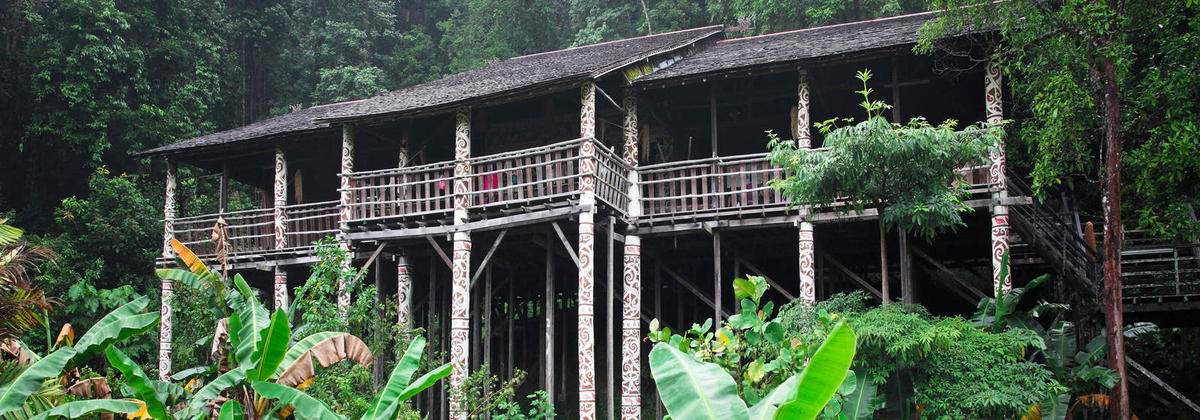
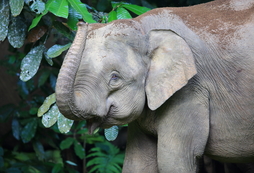
Respecting the environment and culture
Borneo’s rainforests, waterways, and seas create a rich landscape home to a wide variety of plants and animals. We’re concerned about this fragile environment and aware that tourism can cause harm to the land and its residents. Wherever we can, we work with locally-owned hotels, lodges, and resorts with green initiatives in place.
We also recognize that supporting local communities is important to preserving Borneo’s culture. Our partners hire and train local residents, plant trees, donate to local non-profit organizations, and help communities with a wide range of projects. If you’d like to contribute or to know more about our efforts in supporting sustainable tourism in Borneo, please give us a ring.
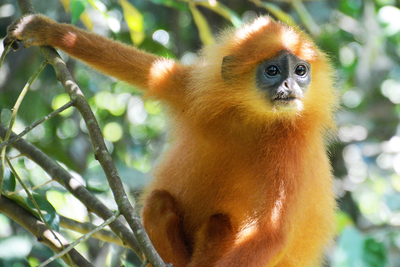
Suggested holiday reading to get you into the spirit:
- Into the Heart of Borneo
- Espresso with the Headhunters
- Borneo Stories
Call us today to learn more about this amazing country! 020 7112 0019.
Best wishes,
Marbree (the Fleewinter Borneo expert)
